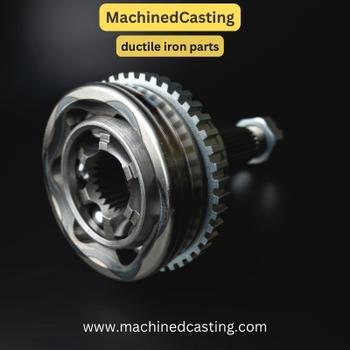Ductile iron parts play a vital role in various industries due to their exceptional mechanical properties, making them suitable for a wide range of applications. Understanding the characteristics, properties, and techniques for working with ductile iron parts is essential for engineers, manufacturers, and anyone involved in metalworking. In this comprehensive guide, we will delve into everything you need to know about ductile iron parts.
What is Ductile Iron? Ductile iron, also known as nodular or spheroidal graphite iron, is a type of cast iron that contains graphite nodules, providing improved ductility and toughness compared to traditional cast iron. This unique microstructure gives ductile iron its excellent strength, impact resistance, and machinability.
Properties of Ductile Iron:
- Strength: Ductile iron exhibits high tensile strength, making it suitable for applications requiring robust mechanical performance.
- Ductility: Unlike conventional cast iron, ductile iron can undergo significant deformation without fracturing, thanks to its nodular graphite structure.
- Impact Resistance: The graphite nodules act as stress concentrators, enhancing the material's ability to absorb impact energy, making it ideal for components subjected to dynamic loading.
- Machinability: Ductile iron can be easily machined to achieve precise dimensions and surface finishes, allowing for intricate part geometries.
Working with Ductile Iron Parts:
- Casting: Ductile iron parts are typically manufactured using sand casting or investment casting processes. During casting, molten metal is poured into a mold cavity, where it solidifies to form the desired shape.
- Machining: Ductile iron parts often require machining to achieve tight tolerances and specific surface finishes. Common machining operations include turning, milling, drilling, and grinding.
- Heat Treatment: Heat treatment processes such as annealing, normalizing, or quenching and tempering can be employed to enhance the mechanical properties of ductile iron parts, such as increasing hardness or improving machinability.
- Surface Finishing: Surface treatments like painting, plating, or powder coating can be applied to ductile iron parts to improve corrosion resistance, aesthetics, and functional properties.
Applications of Ductile Iron Parts:
- Automotive Industry: Ductile iron components are widely used in automotive applications, including engine blocks, crankshafts, and suspension components, due to their strength, wear resistance, and cost-effectiveness.
- Construction and Infrastructure: Ductile iron pipes and fittings are commonly used in water distribution systems, sewerage networks, and structural applications due to their durability and corrosion resistance.
- Machinery and Equipment: Ductile iron parts find applications in various machinery and equipment, including agricultural machinery, hydraulic systems, and industrial machinery, where high strength and wear resistance are required.
In conclusion, ductile iron parts offer a unique combination of strength, ductility, and machinability, making them indispensable in numerous industrial sectors. By understanding the properties and techniques for working with ductile iron, engineers and manufacturers can harness its full potential to create reliable and high-performance components for diverse applications.


